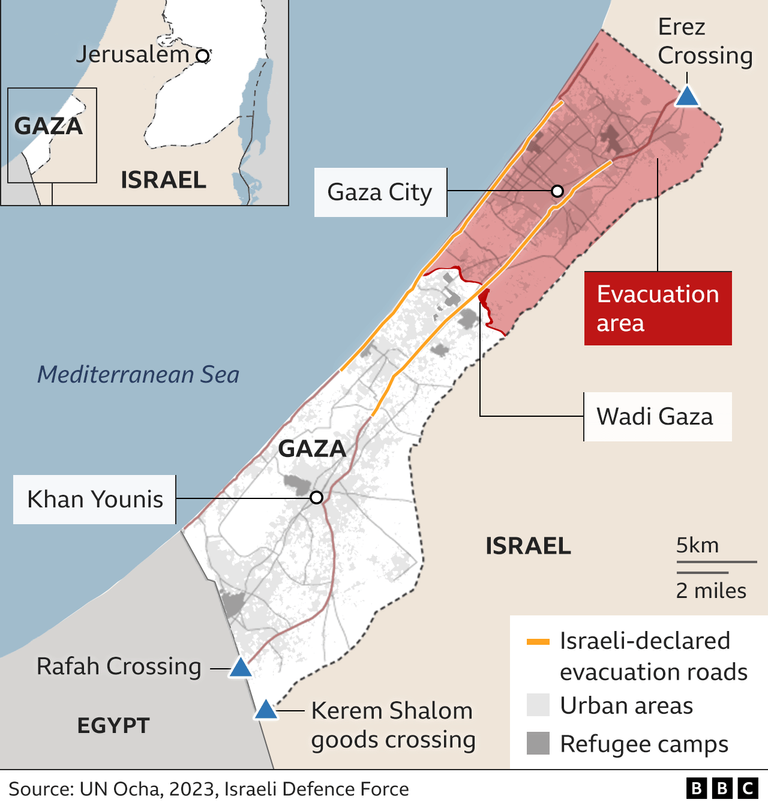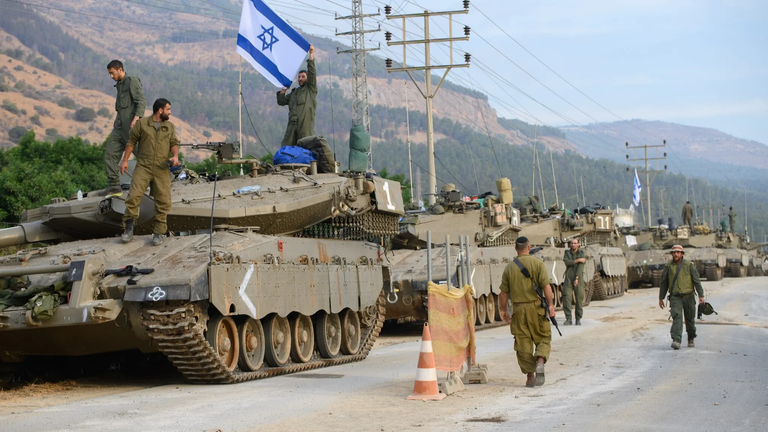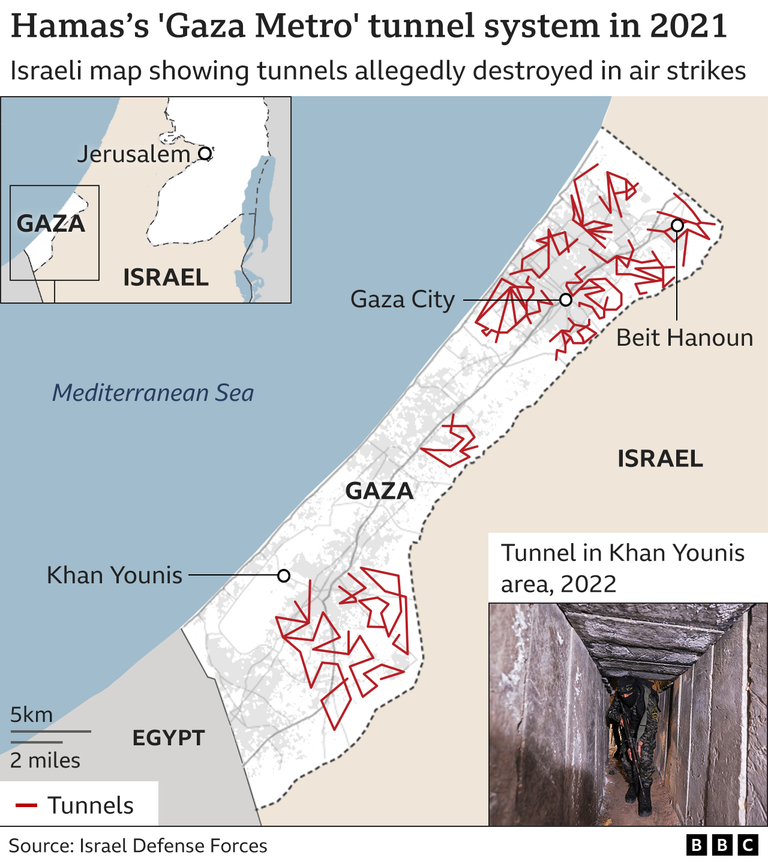
Ever since the events of October the 7th, an Israeli ground invasion of Gaza has loomed large. Israeli politicians have promised to destroy Hamas, told Palestinians to evacuate Gaza City and amassed thousands of IDF troops around the Gaza border. While there was some speculation that the invasion might be called off after weeks of delay and mounting international pressure, over the weekend the IDF stepped up their activities in Gaza and Netanyahu announced Israel's second war of independence. While the IDF's offensives have been more limited than some analysts anticipated, it does look like the ground invasion has now begun in earnest. So in this article, we're going to have a look at what's happened so far, what might happen next, and the continued risks of regional escalation. So let's start by looking at what's happened over the past few days.
While Israeli troops have made brief incursions into Gaza before, what the IDF described as its first raid occurred on Thursday evening. Grainy video footage released by the IDF showed armored bulldozers creating holes in the border fence for Israeli tanks to roll on through, and a brief skirmish with Hamas militants in a built up area in the north. The IDF said the operation was designed to search for tunnel systems and test Hamas's responses, and Al Jazeera claimed that this was the first time that Israeli tanks had been used in an offensive capacity. Then on Friday, Israeli airstrikes against communication infrastructure in Gaza significantly reduced internet connectivity, especially around the southern town of Rafah, and the Israeli military announced it would be expanding its ground operations in Gaza. There were then two further raids on Friday evening, one combined arms effort near the Shejaiya neighborhood in eastern Gaza City, and another smaller sea based assault along the coast in the south. During the day on Saturday, there was an uptick in Israeli airstrikes, further straining Gaza's communications network, and Netanyahu announced that the war had entered what he described as its second stage, widely interpreted as a reference to the three phase war described by Defense Minister Yoav Galant on October the 20th. For context, Galant suggested that the war would have three phases, the first involving airstrikes and limited ground incursions, the second involving deeper ground incursions to defeat what Galant described as pockets of resistance and the third involving the removal of Israel's responsibility for life in the Gaza Strip and the establishment of a new security reality, which seems to imply an even more restrictive blockade of Gaza.

Anyway, in the same press conference, Netanyahu also announced that his primary objective was destroying Hamas and that returning the 200 or so hostages currently in Gaza was essentially secondary. There were then more raids on Saturday evening, with Israeli tanks advancing along the northwest coast towards Gaza City, and skirmishes both in Beit Hanoun and near the bridge refugee camp. There were also scattered reports of skirmishes around the abandoned Yasser Arafat International Airport, which lies just a bit south east of Rafah, near the Kerem Shalom crossing. This was the first time there were widespread reports of small arms fire, which suggest more close quarters attacks, rather than the tank led incursions we saw a few days earlier. Perhaps most interestingly, the IDF held their forward positions after these raids. This is unlike the raids we saw on Thursday. On Friday, when the IDF returned to their original positions before sunrise. Finally, on Sunday evening, the IDF reported that Israeli forces in the northwest had reached the suburbs of Gaza City and fighting was ongoing around Beit Hanoun. There was also a skirmish at the Erez checkpoint, where Hamas militants apparently used tunnels to reach Israeli positions near the Gaza border fence.
Anyway, you get the point. Israel's long anticipated ground invasion has now begun. So what happens next? Well, in the immediate future, we're going to see more raids with the IDF making slow progress into the outer suburbs of Gaza City. Most of the bombing so far has occurred around three places Beit Hanoun, northwestern Gaza and the eastern suburb of Shejaiya. And we've already seen fighting in all three, which suggests that these will be the main points of entry. At the same time, the IDF are probably going to try and essentially cut Gaza in two to prevent Hamas militants leaving Gaza City by taking up positions along the Wadi Gaza, which is the de facto evacuation line. This would explain why we saw skirmishes around the Bureij refugee camp on Saturday morning, which lies just south of the Wadi Gaza. Looking further ahead, though, perhaps the big question is whether the IDF will go for an intense ground operation into Gaza City or more of a siege. While the recent rhetoric has implied a full scale invasion, defeating the 40,000 or so Hamas militants currently holed up in the underground tunnel network while protecting the 200 or so hostages still left in Gaza, would be immensely difficult. And the last time the IDF really entered Gaza City back in 2014, they lost 16 elite troops and only escaped by resorting to massive indiscriminate artillery.

A ground invasion would also cause significant civilian deaths and would damage infrastructure in Gaza, which would create international pressure for a ceasefire. With all this in mind, the IDF might instead decide to go for more of a siege, taking up positions around Gaza City and bombing the outer bits of the tunnel network to essentially starve Hamas. This would explain why Israel has refused to let fuel into Gaza, despite pressure from the international community, because without fuel, Hamas won't be able to ventilate or light their tunnel network. Siege tactics might also be able to put pressure into hostage negotiations and provoke less of an international backlash, however a siege does carry its own risks. First, a siege takes longer than an invasion, and the Israeli public might well get impatient, increasing the pressure on Netanyahu to resign. Second, a siege only works if the Israeli military can actually cut off or damage Hamas's tunnel network. Otherwise, they'll just be stuck at a stalemate. Israel's last Gaza offensive in 2021 is instructive here, the IDF dropped almost 500 tunnel busting bombs in less than an hour, hoping to force Hamas out, but Hamas just stayed put and the IDF later admitted the bombing was ineffective.
Anyway, now we know a bit more about Israel's ground invasion. What can we say about the risks of regional escalation? Well, the cautious pace of the advance probably makes regional escalation less likely. While there's been an uptick in artillery fire between the IDF and Hezbollah in southern Lebanon, and Iranian President Ebrahim Raisi warned over the weekend that Israel's crimes have crossed the red lines, a slow advance spread out over months mitigates the risk of one big event or triggering a regional escalation, which partly explains why oil prices are coming back down.
This post reads like it was written a week ago.
The ground invasion began 9 days ago.
In the sources I follow, it is written that it will start a ground invasion, but I could not see a tangible military operation. Recently (if I am not mistaken, it should have been 4 days ago), the first attack that I can really call a ground operation took place. Since I write my articles collectively occasionally and share them in a scheduled manner, you may read the news a few days after the event takes place. In the intervening period, I usually check the accuracy of the information I have written in the article and question the existence of details I can add.
Also thanks a lot for your kind upvote 🙏